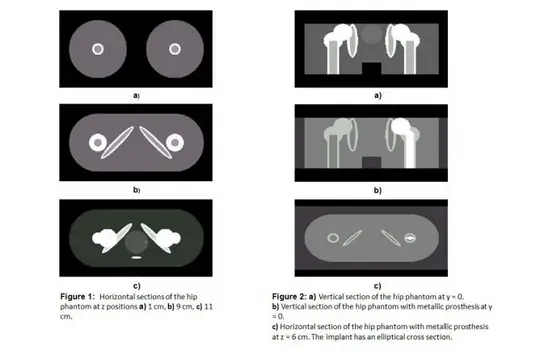Hip Phantom
Oliver Watzke
An anthropomorphic hip phantom is used to examine artifacts that occur in the hip region, especially those resulting from metallic implants. A low contrast object in the bladder region serves to judge the detectability of cancers in this region.
Phantom Description
The phantom has been designed to display the most important structures in the hip region with a minimal number of simple geometrical objects.
The Phantom has a height of 15 cm and a cross section of 35 X 15 cm. The legs are cylinders that meet an oval rump. The femurs are also cylinders, filled with bone marrow. While the pelvis bone is (for the sake of simplicity) realized as an ellipsoid filled with bone marrow, both top of the femur and femur head are solid spheres. In the upper region of the phantom a small semi-ellipsoid represents the coccyx. Between the pelvis bones a urine filled spherical bladder is situated, with a spherical low contrast object (representing a cancer) in the region of the bladder wall. The HU values are as follows:
• body tissues: equivalent to water
• bone: 1000 HU
• bone marrow: 100 HU
• bladder: 20 HU
• low contrast object: 30 HU
Analogous phantoms have been designed with one and two metallic femur implants made of titanium or steel.
Files
